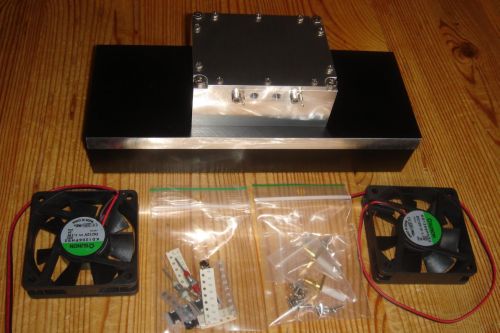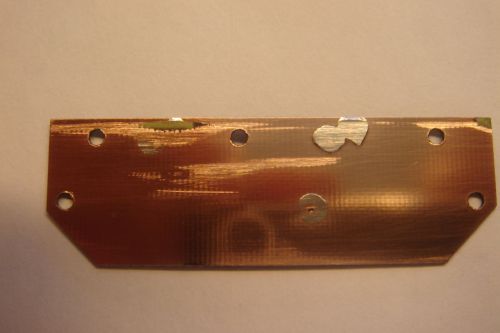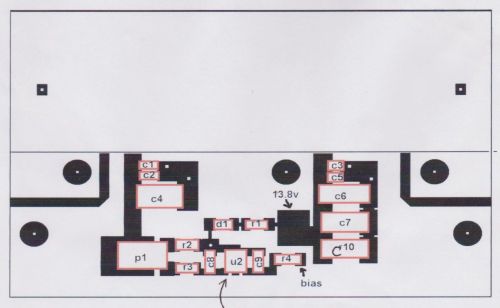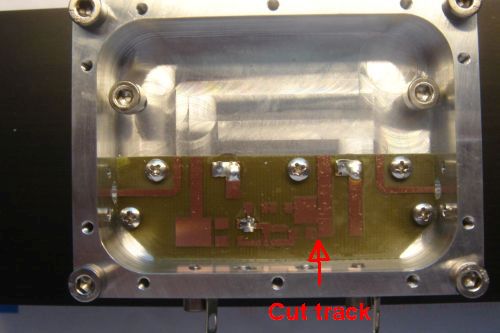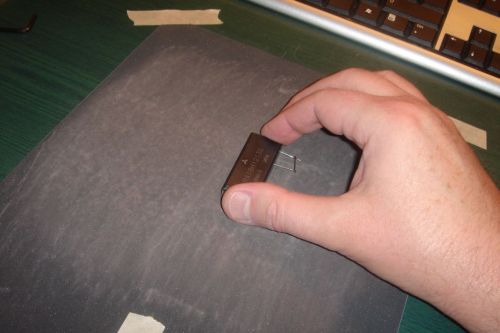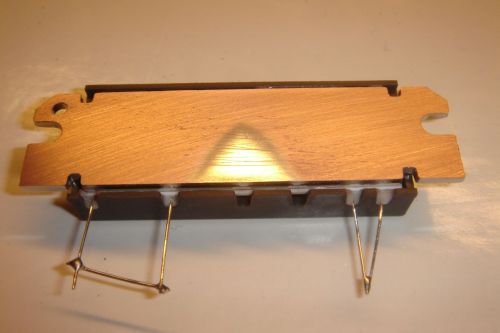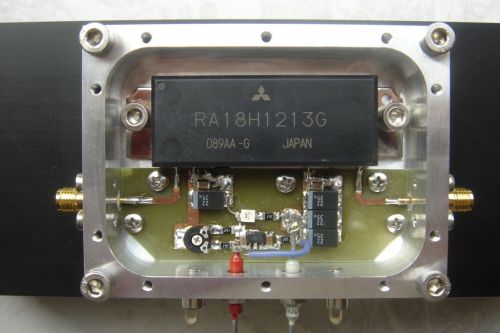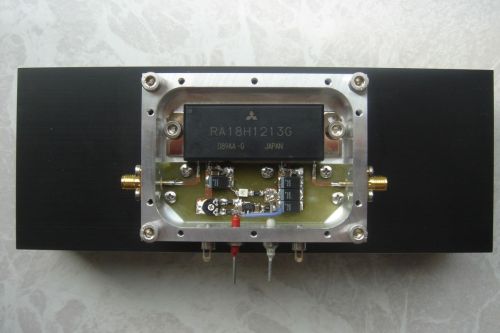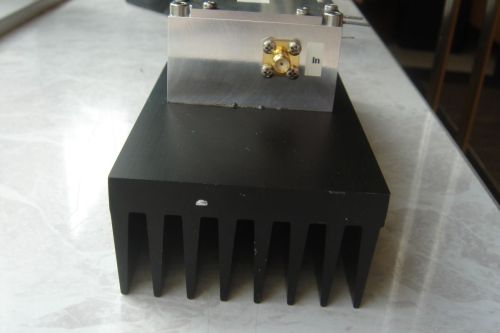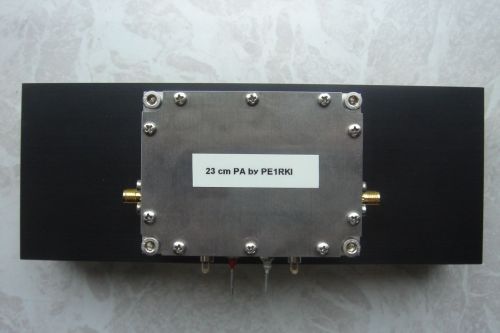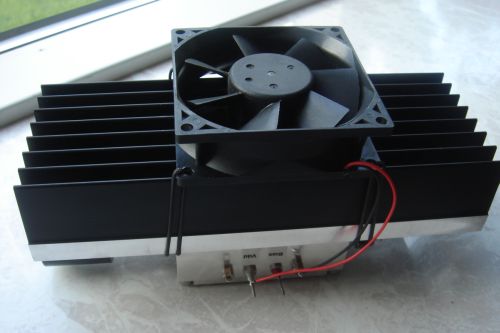1296 MHz PA
with Mitsubishi RA18H1213G
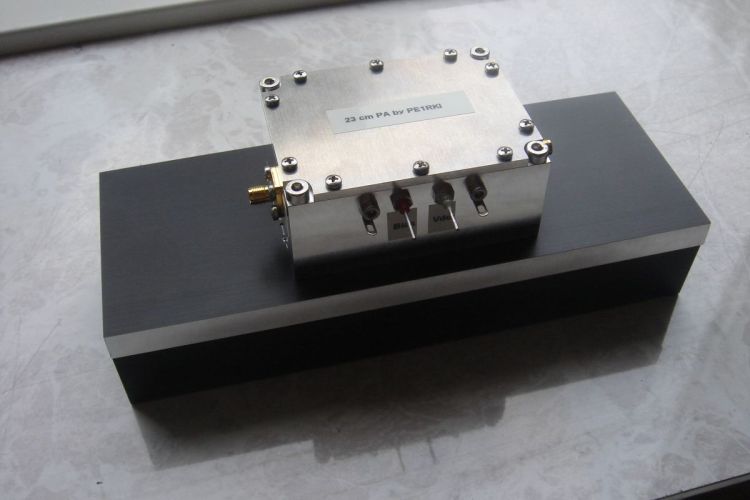
Figure 1.The finished 23 cm PA.
| This page describes how I assembled a 23 cm PA kit based on the Mitsubishi RA18H1213G power module. All components except the power module were purchased from Bert Modderman PE1RKI. He is a wizard with his CNC milling machine. Mechanical parts sold by him are beautiful and perfect! |
Circuit diagram
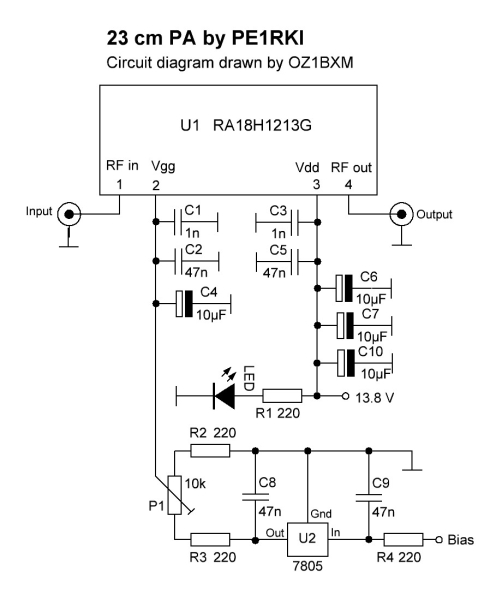
Fig. 2. Circuit Diagram.
Some component values in the kit (delivered by PE1RKI) were diffent from the circuit diagram:
| Component | Circuit Diagram | Delivered with kit |
| C2, C5, C8, C9 | 47 nF | 6n5 SMD |
| C4, C6, C7, C10 | 10 µF | 22 µF SMD |
| R1, R2, R3, R4 | 220 ohm | 240 ohm SMD |
Photos
Click any image to enlarge. Hit "Back" to return here.
Measuring output power
- Frequency was 1296.1 MHz
- Supply voltage (Vdd) was 13.56 V DC
- Pout was measured with Bird 43 power meter (Bird 50E plug) and a 25 W dummy load
- Pout was passed through a low-pass filter having 0.25 dB attenuation at 1296 MHz
| Pin | Pout | Bias Current | Total Current |
| 300 mW | 23 W | 3.5 A | 8.2 A |
| 400 mW | 23 W | 3.5 A | 8.4 A |
| 100 mW | 15 W | 1.0 A | 5.2 A |
| 200 mW | 20 W | 1.0 A | 6.4 A |
| 300 mW | 21 W | 1.0 A | 6.7 A |
| 100 mW | 5 W | 0.4 A | 2.9 A |
| 200 mW | 17 W | 0.4 A | 5.2 A |
| 300 mW | 19 W | 0.4 A | 5.9 A |
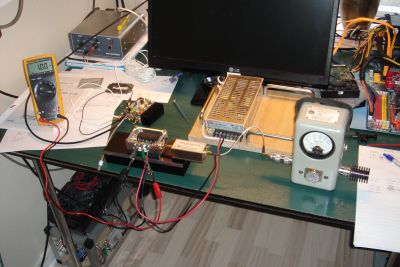
Figure 14.
Photo from the lab during measurements. Click to enlarge.
Written by OZ1BXM
Lars Petersen. Latest revision 06-Feb-2017.
